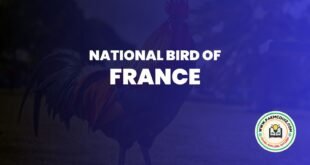When you think of France, images of the Eiffel Tower, croissants, and the Louvre might come to mind. But there’s another symbol that holds a special place in French culture and history—the Gallic Rooster (Coq Gaulois). This proud and spirited bird is more than just a farmyard animal; it is a national emblem that represents the heart and soul of France. In this blog post, we’ll explore the fascinating story of the Gallic Rooster, its historical significance, cultural impact, and why it continues to be a beloved symbol of French identity. Whether you’re a history enthusiast, a culture buff, or simply curious about this iconic bird, this post will provide a deep dive into the world of the Gallic Rooster.
Table of Contents
What is the Gallic_Rooster?
The Gallic Rooster is a national symbol of France, representing the country’s spirit, resilience, and pride. Unlike many nations that choose majestic birds like eagles or hawks as their national symbols, France’s choice of a rooster is unique and deeply rooted in its history. The rooster’s association with France dates back to ancient times, and it has since become an enduring emblem of French identity.
Why a Rooster?
The connection between the rooster and France lies in a clever play on words. The Latin word gallus means both “rooster” and “inhabitant of Gaul,” the ancient region that is now modern-day France. This dual meaning led to the rooster becoming a symbol of the French people. Over time, the Gallic Rooster evolved into a national emblem, embodying the values of vigilance, courage, and resilience.
The Historical Significance of the Gallic_Rooster
The Gallic Rooster’s journey as a national symbol is a captivating tale that spans centuries. Let’s take a closer look at its historical significance.
Ancient Origins
The rooster’s association with France can be traced back to the Roman Empire. The Romans referred to the region of Gaul as Gallia, and its inhabitants as Galli. The Latin word gallus (rooster) became a playful pun, linking the people of Gaul to the bird. This connection was further reinforced by the rooster’s natural traits, such as its boldness and protective nature, which mirrored the characteristics of the Gauls.
Medieval and Renaissance Periods
During the Middle Ages, the rooster began to appear on French coins and coats of arms. It was seen as a symbol of faith and hope, often associated with Christianity. By the Renaissance, the Gallic Rooster had become a popular emblem in French art and literature, representing the nation’s resilience and pride.
The French Revolution
The French Revolution (1789–1799) marked a turning point for the Gallic_Rooster. As the French people fought for liberty, equality, and fraternity, the rooster became a symbol of the revolutionary spirit. It was used on flags, uniforms, and official documents, embodying the courage and determination of the French people.
Modern Era
Today, the Gallic Rooster is widely recognized as a national symbol of France. It appears on official emblems, sports team jerseys, and even the country’s euro coins. The rooster’s enduring presence reflects its deep-rooted significance in French culture and history.
The Gallic Rooster in French Culture
The Gallic Rooster is more than just a national symbol; it is deeply embedded in French culture. Here are some ways the rooster has influenced art, literature, and everyday life in France.
Art and Architecture
The rooster has been a popular motif in French art and architecture for centuries. It can be seen in sculptures, paintings, and stained glass windows, often symbolizing vigilance and protection. One notable example is the rooster weathervane atop many French churches, serving as a reminder of the rooster’s role as a guardian.
Literature and Folklore
In French literature, the rooster often appears as a character or symbol. It is featured in fables, poems, and folk tales, representing courage, pride, and resilience. One famous example is the fable “The Cock and the Fox” by Jean de La Fontaine, which highlights the rooster’s wit and bravery.
Sports and National Pride
The Gallic Rooster is a prominent symbol in French sports. It is the mascot for the French national football and rugby teams, representing the competitive spirit and unity of the nation. Fans proudly display the rooster on flags, banners, and jerseys during international competitions.
Everyday Life
The rooster’s influence extends to everyday life in France. It is a common motif in home decor, fashion, and even cuisine. For example, rooster-shaped figurines and kitchenware are popular items, and the bird is often featured in traditional French recipes.
The Gallic Rooster vs. Other National Symbols
While many countries choose majestic birds like eagles, falcons, or peacocks as their national symbols, France’s choice of a rooster is unique. Here’s how the Gallic Rooster compares to other national birds:
- United States: Bald Eagle – Symbolizes strength, freedom, and independence.
- United Kingdom: Robin – Represents renewal and hope.
- India: Peacock – Embodies beauty, grace, and pride.
- Australia: Emu – Reflects resilience and adaptability.
Unlike these birds, the Gallic Rooster is not known for its physical prowess or beauty. Instead, it represents qualities like vigilance, courage, and resilience, which are deeply ingrained in French culture and history.
The Gallic Rooster in French Heraldry
Heraldry, the practice of designing and displaying coats of arms, has played a significant role in French history. The Gallic Rooster is a common element in French heraldry, symbolizing the nation’s identity and values.
Coat of Arms
The rooster appears on the coats of arms of many French cities, regions, and institutions. For example, the city of Paris features a rooster on its official emblem, representing the city’s vigilance and strength.
Military Insignia
The Gallic Rooster is also used in military insignia, symbolizing bravery and patriotism. During World War I, French soldiers wore rooster badges as a sign of national pride and unity.
Fun Facts About the Gallic Rooster
Here are some interesting tidbits about France’s national bird:
- Not an Official Symbol: Despite its widespread use, the Gallic Rooster is not an official national symbol of France. It is, however, widely recognized and embraced by the French people.
- Rooster on Coins: The rooster appears on the French euro coins, symbolizing the nation’s identity and heritage.
- Cultural Icon: The Gallic Rooster is a popular cultural icon, featured in movies, cartoons, and advertisements.
- Mascot for Sports Teams: The rooster is the mascot for many French sports teams, including the national football and rugby teams.
Why the Gallic Rooster Matters
The Gallic Rooster is more than just a bird; it is a symbol of French identity, history, and values. Here’s why it matters:
- Cultural Heritage: The rooster reflects France’s rich cultural heritage and historical legacy.
- National Pride: It embodies the courage, resilience, and unity of the French people.
- Global Recognition: The Gallic Rooster is instantly recognizable as a symbol of France, representing the nation on the global stage.
FAQs
1. What is the Gallic Rooster?
The Gallic Rooster is a national symbol of France, representing the country’s spirit, resilience, and pride.
2. Why is the rooster a symbol of France?
The rooster’s association with France dates back to ancient times, when the Latin word gallus (meaning both “rooster” and “inhabitant of Gaul”) linked the bird to the French people.
3. Is the Gallic Rooster an official national symbol?
No, the Gallic Rooster is not an official national symbol, but it is widely recognized and embraced by the French people.
4. Where can I see the Gallic Rooster in France?
The rooster appears on French euro coins, sports team jerseys, and various cultural and historical artifacts.
5. What does the Gallic Rooster symbolize?
The Gallic Rooster symbolizes vigilance, courage, and resilience, qualities that resonate deeply with French culture and history.




